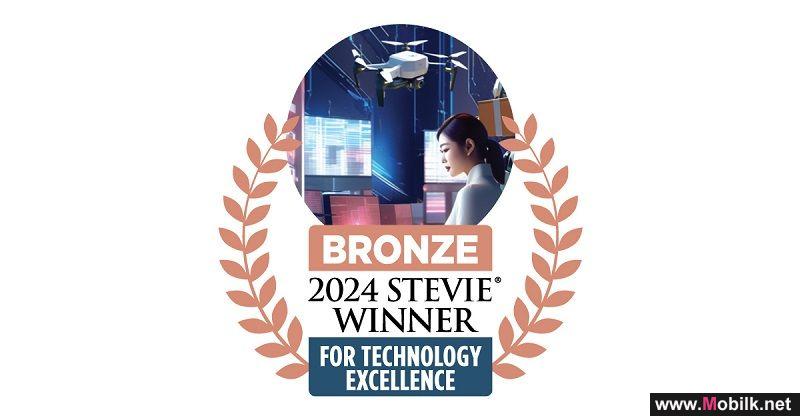IoT Vulnerabilities Open Up New Possibilties to Hackers
More connected devices mean more attack vectors and more possibilities for hackers to target us; unless we move fast to address this rising security concern, we’ll soon be facing an inevitable disaster.
2017-01-15 - 08:42
GMT
 UAE
UAE
Mobilk - Internet of Things is a revolution that has suddenly captured our imagination. As a technology, IoT is unique since it has a role to play in consumer, enterprise and industrial worlds. At the consumer level, the adoption of IoT for areas including home monitoring & control, wearable tech, and connected cars has already started. At the enterprise level building management, fleet management, hospital management, retail, telecom, and energy sectors are already adopting it for various benefits.
According to Markets and Markets, the IoT market size is estimated to grow from $157.05 Billion in 2016 to $661.74 Billion by 2021, at a CAGR of 33.3% from 2016 to 2021. All industry verticals are undergoing a huge transformation in a bid to move toward affordable, accessible, and quality services to their customers. New applications and use cases, a result of cutting edge technology innovations, are being developed to address the changing industry needs. IoT, in combination with cloud computing and big data, is creating lucrative opportunities for organizations.
"However, the ubiquitous use of a technology in wide ranging areas brings forth risks that range from significant to catastrophic. Nuclear facilities can be damaged overnight by compromising the IoT infrastructure. We have already seen an early avatar of this in the form of Stuxnet," explained Vinod Vasudevan, Co-founder and CTO at Paladion. "Similarly, nation state attacks are expected to target IoT used in power grids and other utilities. Smart cities can get paralysed in minutes if the IoT infrastructure that automates the processes here gets compromised. IoT risks are complex since IoT technology stack has many new components including IoT sensors, protocols, gateways, and management platforms."
Thus, IoT security includes many new risk areas that cybersecurity industry is still learning to resolve including cloud & mobility. As an example, there are many IOT protocols in the market today including Zigbee, CoAP, Advanced Message Queuing Protocol (AMQP), Digital Data service (DDS), and Message Queue Telemetry Transport (MQTT). These protocols are either new or derived for IOT from an earlier version used for generic purposes. As a result, they are vulnerable unless special effort is taken to secure them.
"In addition, IOT management platforms have web interfaces and related protocols enabled. Therefore, they are exposed to common web application attacks. The impact of such web based attacks on IoT management platform is high since it can be used to subvert millions of sensors for a malicious purpose. Imagine impact of power grid sensors taken off the grid with a successful web based attack on the IoT management platform," added Vasudevan.
There are three key challenges for the future of IoT. This includes ubiquitous data collection, potential for unexpected uses of consumer data, and heightened security risks. Hence, companies need to enhance privacy and build secure IoT devices by adopting a security-focused approach, reducing the amount of data collected by IoT devices, and increasing transparency and providing consumers with a choice to opt-out of data collection.
"Developers of IoT devices have not spent time thinking about how to secure their devices and services from cyberattacks. The small size and limited processing power of many connected devices could inhibit encryption and other robust security measures,” said Vasudevan. “Moreover, some connected devices are low-cost and essentially disposable. If vulnerability is discovered on that type of device, it may be difficult to update the software or apply a patch – or even to get news of a fix to consumers.”
Thus, securing IOT infrastructure requires collaboration between industry, and academia, government for "secure by design" roll out of IOT protocols. Such initiatives are still at nascent stages but have started. "There should be certification of the safety of IoT products and components from central authorities backed by government. This can be treated very similar to car safety and certification that we are all used to. IoT security movement has started but there is still a long way to go. Good news is that we can still do things to enhance the barrier to attacks while we wait for industry to accelerate the act," concluded Vasudevan.
Reports and Studies
China Telecom Global Limited (CTG), the world-leading provider of integrated telecommunication services, has signed a strategic subsea capacity and..
Reports and Studies
Espoo, Finland – Nokia, Qualcomm Technologies, Inc., and T-Mobile today announced that they have achieved a worlds first showcase of successfully..
Reports and Studies
Steven Yi, President of Huawei Middle East and Central Asia, gave a keynote on the second day of LEAP, Saudi Arabias largest and most comprehensive..

 Vodafone Oman
Vodafone Oman Emirates Telecom
Emirates Telecom  Ooredoo Om
Ooredoo Om Ooredoo Qa
Ooredoo Qa stc Bahrain
stc Bahrain Orange Egypt
Orange Egypt Mobily
Mobily Zain Jo
Zain Jo omantel
omantel STC
STC Emirates Du
Emirates Du Asiacell
Asiacell Etisalat Egypt
Etisalat Egypt  Telecom Egypt
Telecom Egypt jawwal
jawwal Orange Jo
Orange Jo Umniah
Umniah Zain Sa
Zain Sa Bahrain Batelco
Bahrain Batelco Zain Bh
Zain Bh Wataniya palestine
Wataniya palestine Kuwait Viva
Kuwait Viva  Zain Kw
Zain Kw Vodafone Qa
Vodafone Qa MTN Syria
MTN Syria Syriatel
Syriatel Sabafon
Sabafon Zain Iq
Zain Iq MTN Yemen
MTN Yemen Ooredoo Kw
Ooredoo Kw Vodafone Egypt
Vodafone Egypt  Samatel
Samatel Huawei
Huawei Samsung
Samsung MOTOROLA
MOTOROLA Lenovo
Lenovo Alcatel
Alcatel LG
LG Nokia
Nokia Sony Ericsson
Sony Ericsson HTC
HTC BlackBerry
BlackBerry Siemens
Siemens Acer
Acer Sony
Sony Asus
Asus VK
VK APPLE
APPLE BenQ-Siemens
BenQ-Siemens Sagem
Sagem Eten
Eten HP
HP Panasonic
Panasonic Amoi
Amoi Toshiba
Toshiba Sharp
Sharp Sonim
Sonim Bird
Bird Mitac
Mitac Philips
Philips Vertu
Vertu Pantech
Pantech Micromax
Micromax Maxon
Maxon Haier
Haier I-mate
I-mate Gigabyte
Gigabyte I-mobile
I-mobile Kyocera
Kyocera BenQ
BenQ Microsoft
Microsoft Telit
Telit Connect
Connect Sendo
Sendo Mitsubishi
Mitsubishi SEWON
SEWON NEC
NEC DELL
DELL Thuraya
Thuraya Neonode
Neonode Be
Be Qtek
Qtek Bosch
Bosch Palm
Palm MWG
MWG Fujitsu Siemens
Fujitsu Siemens XCute
XCute WND
WND INQ
INQ O2
O2 Innostream
Innostream Benefon
Benefon Google
Google


















